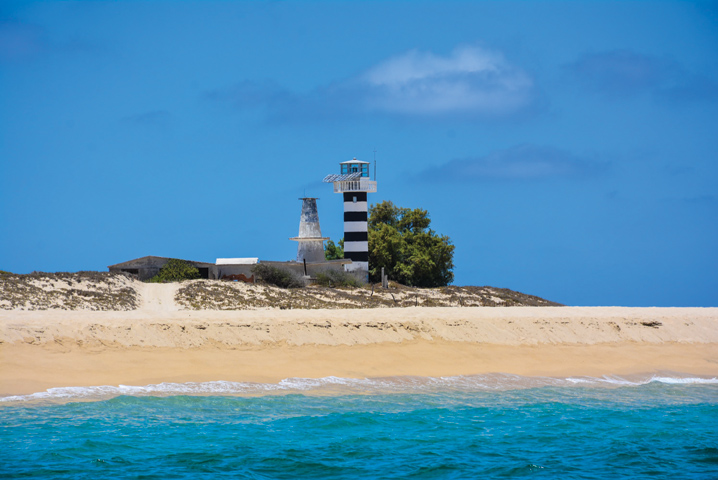
 Upon arrival in Cabo, our flight was the only one outside of Terminal 2, with the exception of a small commuter jet sitting on the tarmac of Terminal 1, for local flights within Mexico. There was no long line at immigration and all luggage arrived in a timely manner. It was then off to the final declaration of goods brought into Mexico before final clearance to our awaiting shuttle.
Upon arrival in Cabo, our flight was the only one outside of Terminal 2, with the exception of a small commuter jet sitting on the tarmac of Terminal 1, for local flights within Mexico. There was no long line at immigration and all luggage arrived in a timely manner. It was then off to the final declaration of goods brought into Mexico before final clearance to our awaiting shuttle.
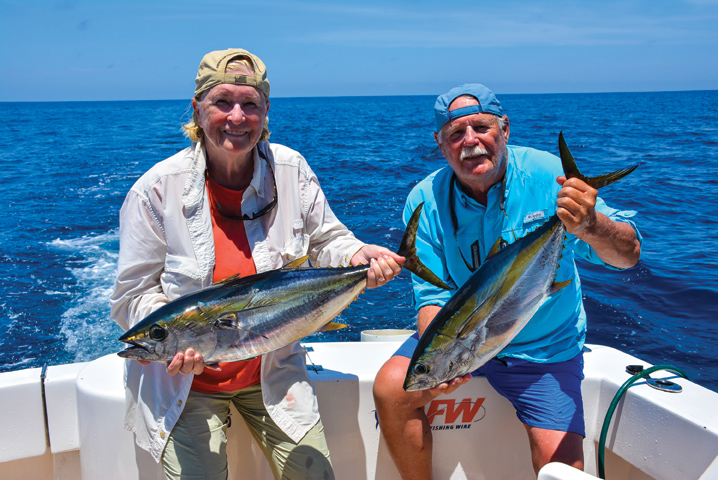 The seas were clam and talk around the bar at the pool was of the good fishing currently taking place. We sat down and chatted with Axel who assured us that fishing is very good and that our cruiser would be awaiting us at 6:30 in morning. Arrangements for lunch and cold drinks were made and a check on our Mexican fishing license finalized arrangements for the following days fishing.
The seas were clam and talk around the bar at the pool was of the good fishing currently taking place. We sat down and chatted with Axel who assured us that fishing is very good and that our cruiser would be awaiting us at 6:30 in morning. Arrangements for lunch and cold drinks were made and a check on our Mexican fishing license finalized arrangements for the following days fishing.
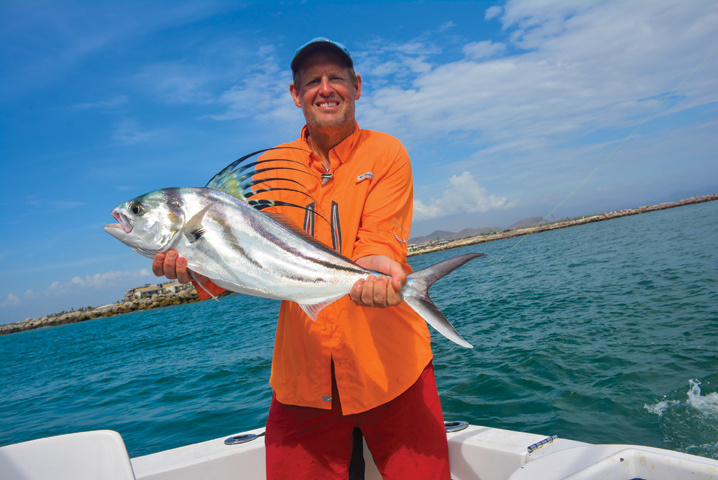 The veranda offered up an excellent venue to enjoy a warm Mexican evening on the Sea of Cortez and a cold Pacifico made for a good choice while waiting the chef’s specialties of ceviche, home-made tortilla soup and grilled pargo off the dinner menu.
The veranda offered up an excellent venue to enjoy a warm Mexican evening on the Sea of Cortez and a cold Pacifico made for a good choice while waiting the chef’s specialties of ceviche, home-made tortilla soup and grilled pargo off the dinner menu.
There were no sardines available for live bait, but one of the local pangas had some scad available allowing us bigger baits for billfish. The fast Eclipse91 headed out to the tuna grounds but the captain could not locate a school of porpoise, so we opted to put out a spread of Zuker jigs and couple of small tuna feathers in search of marlin or Dorado.
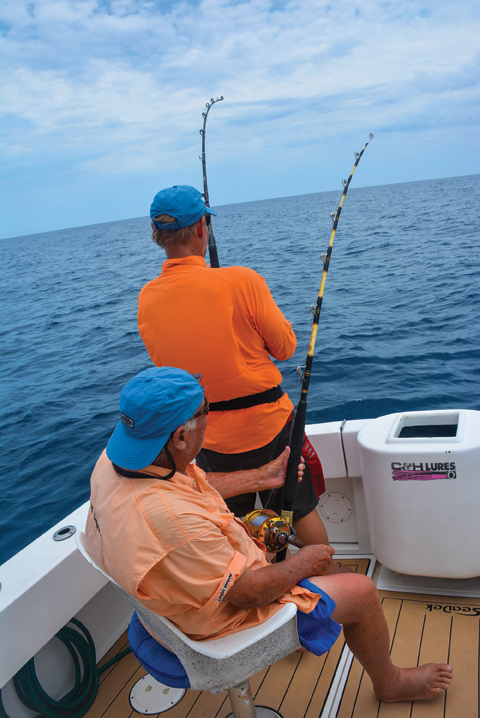 It was mid-morning and we had only a couple of billfish strikes, that were so soft that lines were not snapped out of the outriggers. It was like the billfish were just not hungry, although this fishery showed of birds, flying fish and dead calm seas.
It was mid-morning and we had only a couple of billfish strikes, that were so soft that lines were not snapped out of the outriggers. It was like the billfish were just not hungry, although this fishery showed of birds, flying fish and dead calm seas.
About noon a marlin came up behind one of the Zuker lures and my son Dr. Brook Niemiec DVM of San Diego dropped back one of the scads as an offering. That marlin took the live bait and came out of the water throwing its head from side to side. It was a good-sized blue marlin, weighing over 300 lbs. that took nearly an hour to bring to leader and release. Later on, the deckhand spotted a small pod of porpoise and we finished the day by adding 10 school sized tuna to the catch.
It was hot on the sandy beach, which mandated flip-flops to walk from the calm shoreline up to the shade of the resort pool. It was fresh sushi and grilled yellowfin tuna for dinner that night along with a cold bottle of Chardonnay.
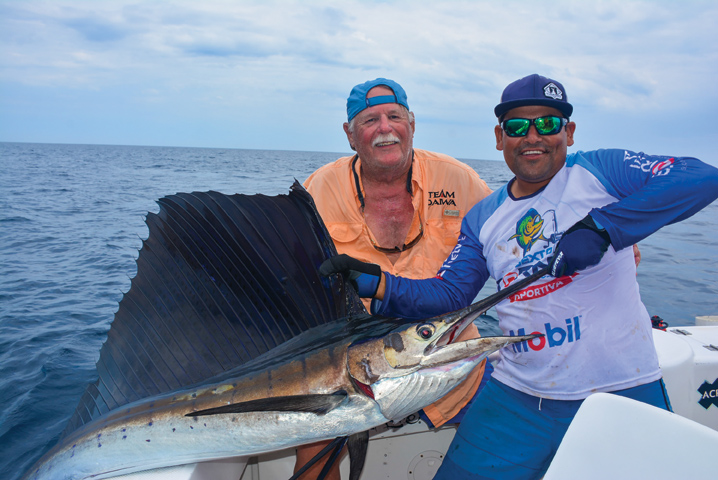 Day two started off with a run out to the tuna grounds again, and we found them just about 3 miles off the beach…a huge school of porpoise. Rigged up with small 125 mm Sevenstrand jet heads and hoochie rubber jigs, tuna jumped all over them. Another boat hooked into a marlin while running through the porpoise and this angler hooked into a striped marlin that ate a tiny hoochie jig, only to have in come unbuttoned after 10 minutes. Our choice for light tackle tuna fishing was a matched set of Daiwa Saltiga rods and high-end Saltiga LD30SH reels, spooled with Daiwa J-Braidx8 line. With the fish locker, loaded with ice, now filled with tuna we headed off in quest of more marlin or hopefully a sailfish.
Day two started off with a run out to the tuna grounds again, and we found them just about 3 miles off the beach…a huge school of porpoise. Rigged up with small 125 mm Sevenstrand jet heads and hoochie rubber jigs, tuna jumped all over them. Another boat hooked into a marlin while running through the porpoise and this angler hooked into a striped marlin that ate a tiny hoochie jig, only to have in come unbuttoned after 10 minutes. Our choice for light tackle tuna fishing was a matched set of Daiwa Saltiga rods and high-end Saltiga LD30SH reels, spooled with Daiwa J-Braidx8 line. With the fish locker, loaded with ice, now filled with tuna we headed off in quest of more marlin or hopefully a sailfish.
It wasn’t much past 9 AM when a marlin’s dorsal fin appeared behind one of the lures. The sport fisher slowed a little and the foaming sea of prop wash all of sudden showed the presence of 4 billfish, of which at least two were blue marlin. While the blues sounded out, both outrigger Zuker lures were bit and my son and I were hooked up into a billfish double. The fishing ended with my wife Toni bringing another striped marlin to leader for a quick release and then it was back to the beach with colorful fish flags flying high up in the outriggers.
To expect fishing be good a second day in a row was being very optimistic, but the tuna where still in the same area and bit good. After 10 more tuna were added to the onboard fish locker, it was then time to run north in hopes of another blue marlin hookup.
With flat calm water, with literally thousands of Pectoral birds winging over the Sea of Cortez and flying fish everywhere, fishing conditions couldn’t have been any better.
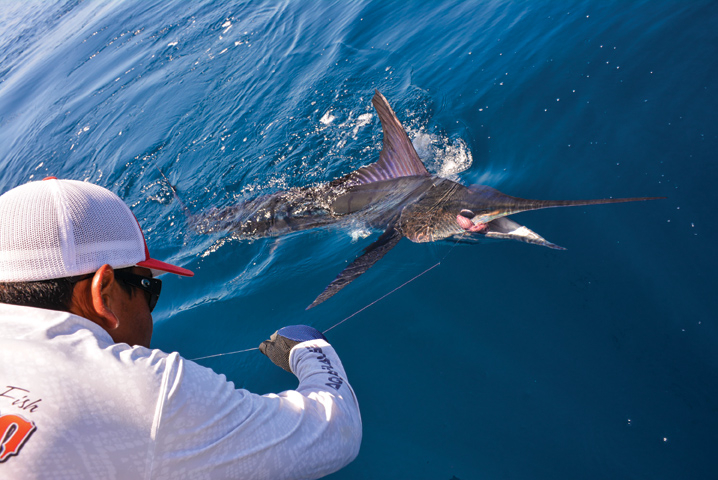 All of a sudden there was an explosion on the short line lure, as a huge blue marlin cleared its entire body out of the water with an orange marlin lure hanging out its huge mouth. The sight of the leaping massive blue was just like the TV commercial for Tropic Star Lodge off Panama of their black marlin being fought.
All of a sudden there was an explosion on the short line lure, as a huge blue marlin cleared its entire body out of the water with an orange marlin lure hanging out its huge mouth. The sight of the leaping massive blue was just like the TV commercial for Tropic Star Lodge off Panama of their black marlin being fought.
The tackle was right and the fighting chair was set in the cockpit perfectly to allow this angler and the captain to stay tight with that huge blue. During the battle, which lasted nearly 1.5 hours, that beautiful marlin made many acrobatic jumps and tail-walked across the calm sea.
After being dredged up from spending most of the fight down deep the expended blue came back up to the surface with the deckhand ready to grab the 300-lb. test leader. All was right to simply wait for the swivel to come within hand-reach, when the marlin turned towards the boat, opened its huge mouth, winging its massive bill and threw that jig right back at the boat. Ironically, that marlin stayed up, probably kind of still in a state of shock, and could have been backed down on a few more feet and free gaffed, if that had been the choice rather than plans to release all marlin. It was estimated that blue weighed nothing less than 500-lbs. and they awarded this angler with a catch and release flag, as the fish was beaten and so close to being fully leadered.
That marlin was by far the largest fish this saltwater fishing editor has ever hooked, far surpassing a 350-lb. black marlin off Bazaruto Island in the Indian Ocean and a 300-lb. “cow” yellowfin tuna caught four years ago on the Outer Gordo Banks off Cabo San Lucas.
The last day allowed only for a few morning hours of fishing around the Punta Arena light-house for roosterfish along the beach. After blowing a large rooster that ate a scad, Brook hooked into his roosterfish, which weighed about 18 pounds and would be the last fish of this truly epic time of fishing the Sea of Cortez.
Come next summer the Niemiec family is looking ahead to booking another trip to Hotel Buena Vista Beach Resort, either to fish for more blue marlin, tuna, roosterfish or Dorado, or hopefully all species, the last week of July or early August.

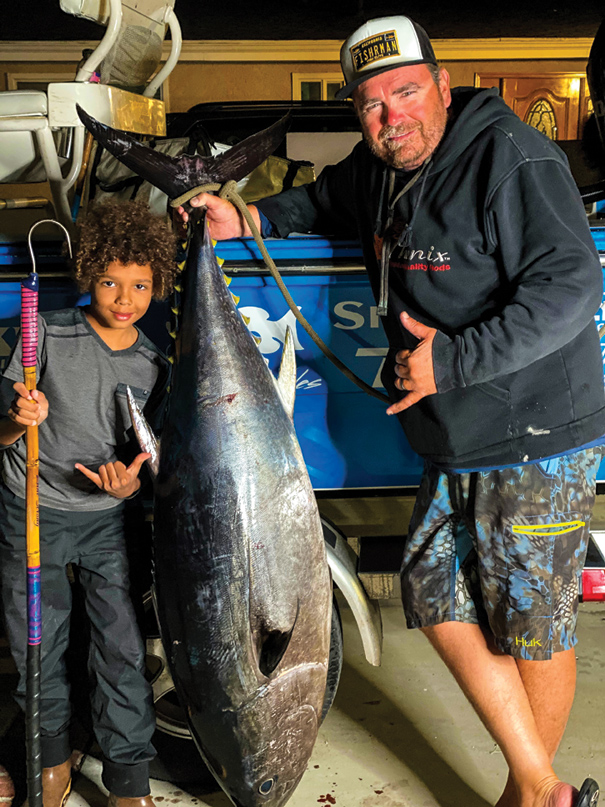
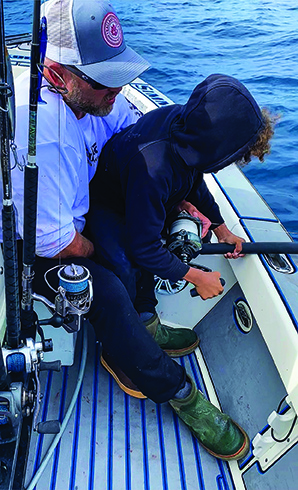 If I am going to take Badger I have to make sure the weather is good and that I have multiple people on the water that I can call in case of an emergency. Call me a responsible dad I guess. Chris Bona and Billy K were also going to be on the water so it was a go. The night before a big fishing trip is always prep night in the Lane household. As we were getting ready Badger came to me and said “Dad, I have a good feeling about tomorrow”. I smiled and agreed.
If I am going to take Badger I have to make sure the weather is good and that I have multiple people on the water that I can call in case of an emergency. Call me a responsible dad I guess. Chris Bona and Billy K were also going to be on the water so it was a go. The night before a big fishing trip is always prep night in the Lane household. As we were getting ready Badger came to me and said “Dad, I have a good feeling about tomorrow”. I smiled and agreed.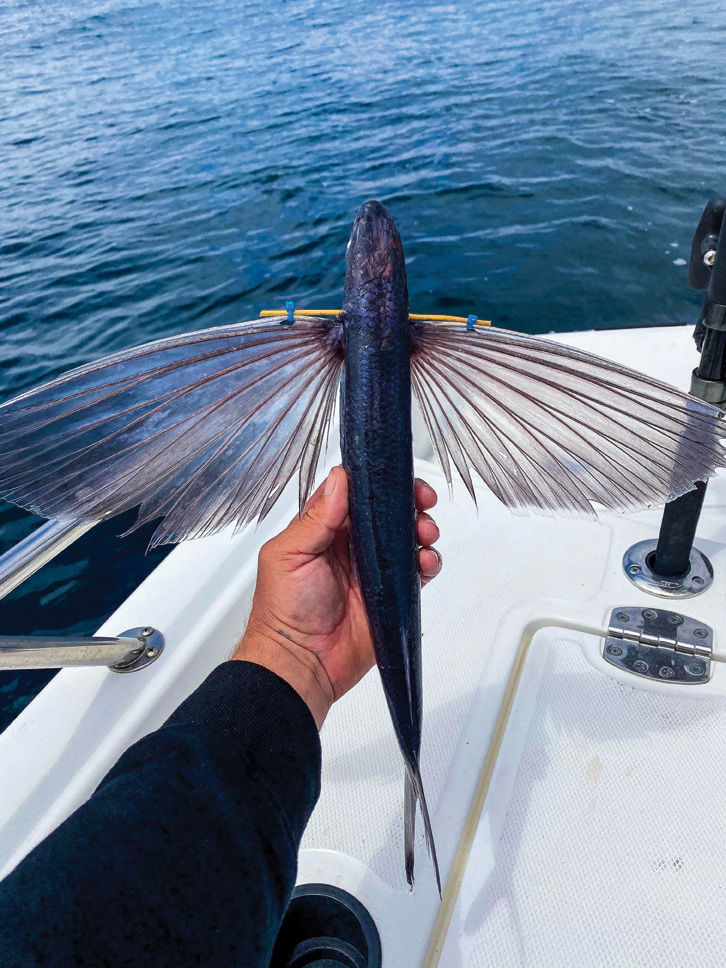 We set up a bait and let it out. Shannon, Badger and I are now getting the boat organized and decided to have lunch. As we were eating our sandwiches, we decided that we were going to call it a day because we were happy with the two fish we caught. As we are eating our sandwiches and out of nowhere…. Boom! The biggest blowup of the day. The fish jumped with a full belly out of the water. This was action. I instantly put the reel into gear to get tight on her, hook Up!! This is where it became the best day ever.
We set up a bait and let it out. Shannon, Badger and I are now getting the boat organized and decided to have lunch. As we were eating our sandwiches, we decided that we were going to call it a day because we were happy with the two fish we caught. As we are eating our sandwiches and out of nowhere…. Boom! The biggest blowup of the day. The fish jumped with a full belly out of the water. This was action. I instantly put the reel into gear to get tight on her, hook Up!! This is where it became the best day ever.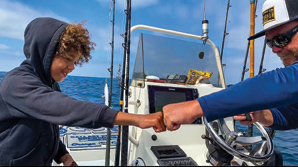 I grabbed the rod and I found a sweet spot on my boat near the bow where I keep two 22 gallon external gas tanks. I sat down on the tank and positioned the rod under my leg and laid it on the rail.. The rod is an Okuma SCT XXXH 7’6 rail rod and paired with Okuma Makaira 50. I got settled and yelled “Badger you ready?” I told him to come sit on my lap and fight this fish…I dropped the Makaira into low gear and Badger went to work… The radio chatter was on fire with all the boys cheering Badger on. Badger is giving it his all and hyping his own self up to not give up. Next thing I know , Shannon yells, “I see color!” He grabs the gaff and gets one end. We get up, Badger and I grab the other two gaffs and as father and son we gaffed her together. HE DID IT!!
I grabbed the rod and I found a sweet spot on my boat near the bow where I keep two 22 gallon external gas tanks. I sat down on the tank and positioned the rod under my leg and laid it on the rail.. The rod is an Okuma SCT XXXH 7’6 rail rod and paired with Okuma Makaira 50. I got settled and yelled “Badger you ready?” I told him to come sit on my lap and fight this fish…I dropped the Makaira into low gear and Badger went to work… The radio chatter was on fire with all the boys cheering Badger on. Badger is giving it his all and hyping his own self up to not give up. Next thing I know , Shannon yells, “I see color!” He grabs the gaff and gets one end. We get up, Badger and I grab the other two gaffs and as father and son we gaffed her together. HE DID IT!!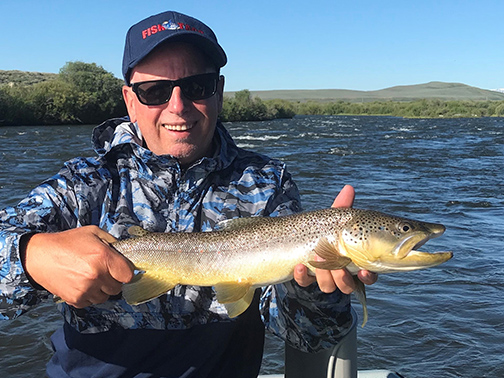
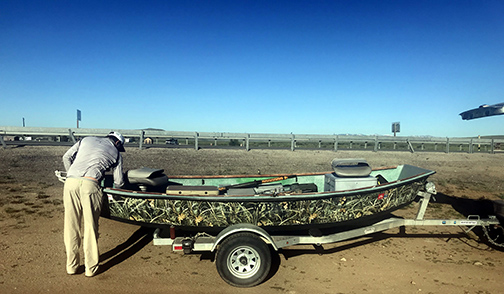 Jackson Hole is where family is and where he grew up. As he said the winters can be rough but no place he would rather be in the summer. That is saying something with all the places Brandon has worked.
Jackson Hole is where family is and where he grew up. As he said the winters can be rough but no place he would rather be in the summer. That is saying something with all the places Brandon has worked.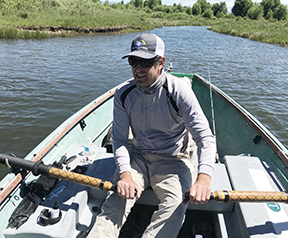 We went down the river for over 4 hours. I pretty much cast non stop that entire time. The only time I took a break was when Brandon made me a turkey sandwich. And using Covid safety measures he put on plastic gloves and made it for me in the boat. They also provided water and soda.
We went down the river for over 4 hours. I pretty much cast non stop that entire time. The only time I took a break was when Brandon made me a turkey sandwich. And using Covid safety measures he put on plastic gloves and made it for me in the boat. They also provided water and soda.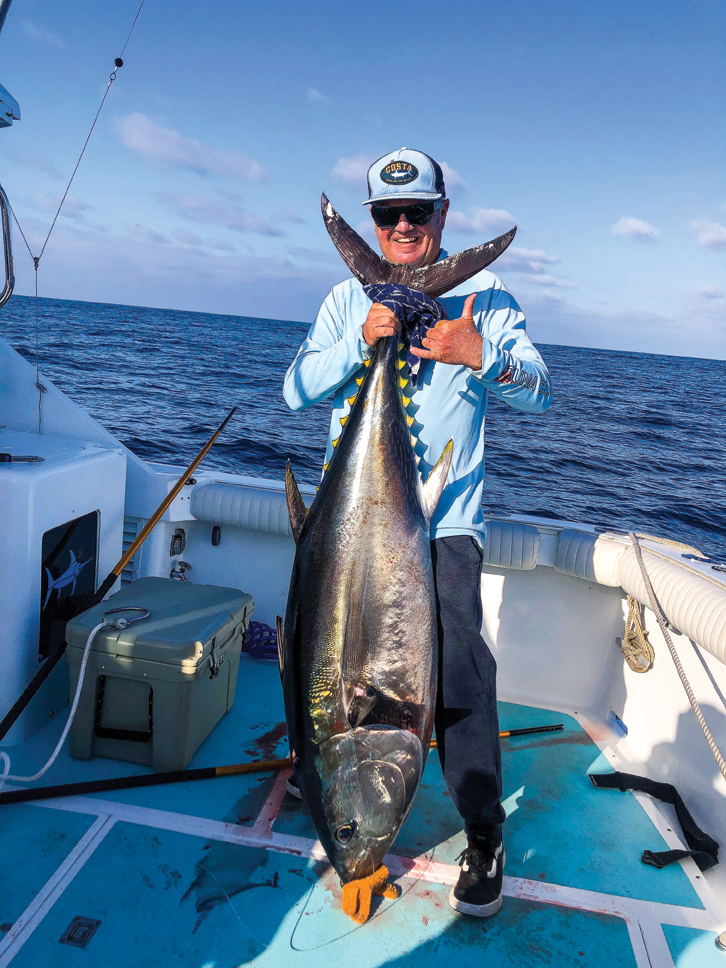
 On this ‘bluefin starter kit’ the outfit that seems to be most versatile and has other fishing applications is the forty-pound outfit. My ‘go-to’ forty-pound outfit is a PENN Fathom 30 two speed lever drag reel filled with #65-pound braid and a hundred-foot top-shot of forty-pound Big Game monofilament. Paired with Seeker 6470-7’ rod, it is a great heavy bait rod and can send a sardine on a flight off the corner or bow. After tuna season, this outfit doubles as a ‘yo yo’ outfit for yellowtail in the spring. I also bring it down to Baja in the fall for school tuna, dorado, and wahoo. A perfect all-around outfit for many applications.
On this ‘bluefin starter kit’ the outfit that seems to be most versatile and has other fishing applications is the forty-pound outfit. My ‘go-to’ forty-pound outfit is a PENN Fathom 30 two speed lever drag reel filled with #65-pound braid and a hundred-foot top-shot of forty-pound Big Game monofilament. Paired with Seeker 6470-7’ rod, it is a great heavy bait rod and can send a sardine on a flight off the corner or bow. After tuna season, this outfit doubles as a ‘yo yo’ outfit for yellowtail in the spring. I also bring it down to Baja in the fall for school tuna, dorado, and wahoo. A perfect all-around outfit for many applications.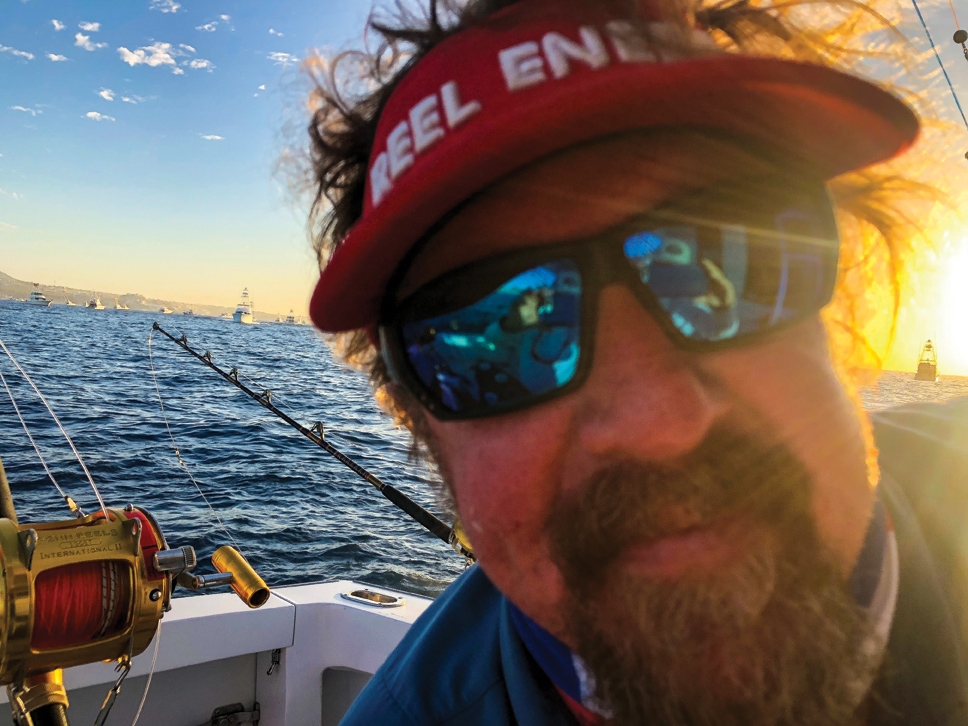 When deploying a sinker rig and you hear the captain say “Marking fish at thirty fathoms” – slowly drop your bait or jig down to the second black mark and you are fishing the zone. It amazes me how many times we mark fish at a specific depth and the outfit at that depth gets bit instantly. It is not science, just properly fishing the depth zone where the tuna are swimming through under the boat. These marks will be extremely helpful at night when deep jigging a Flat Fall or iron for bluefin. If the captain is marking tuna at a specific depth, drop to your black mark and work the jig up and down repeatedly in that zone. It works!
When deploying a sinker rig and you hear the captain say “Marking fish at thirty fathoms” – slowly drop your bait or jig down to the second black mark and you are fishing the zone. It amazes me how many times we mark fish at a specific depth and the outfit at that depth gets bit instantly. It is not science, just properly fishing the depth zone where the tuna are swimming through under the boat. These marks will be extremely helpful at night when deep jigging a Flat Fall or iron for bluefin. If the captain is marking tuna at a specific depth, drop to your black mark and work the jig up and down repeatedly in that zone. It works!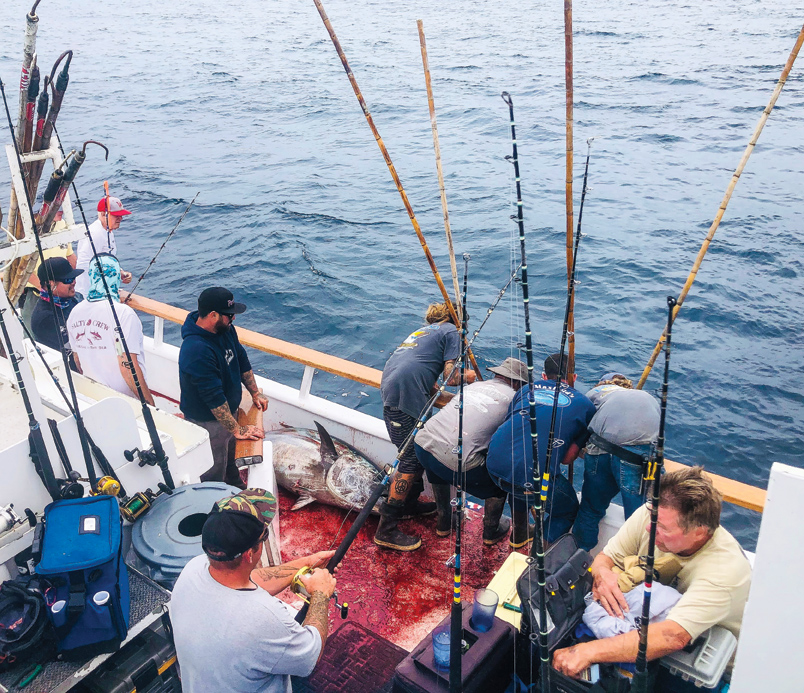 As the local bluefin fishery evolves, do not hesitate to try something new to get a bite. A new presentation can mean the difference between coming home with a trophy or nothing at all. One of the techniques I am playing with this season is trolling a blue/white Illander with a ballyhoo east coast style on the long rigger or stinger position while prospecting for a bluefin zone. It is a proven bluefin trolling bait on the east coast – should work here as well right?
As the local bluefin fishery evolves, do not hesitate to try something new to get a bite. A new presentation can mean the difference between coming home with a trophy or nothing at all. One of the techniques I am playing with this season is trolling a blue/white Illander with a ballyhoo east coast style on the long rigger or stinger position while prospecting for a bluefin zone. It is a proven bluefin trolling bait on the east coast – should work here as well right?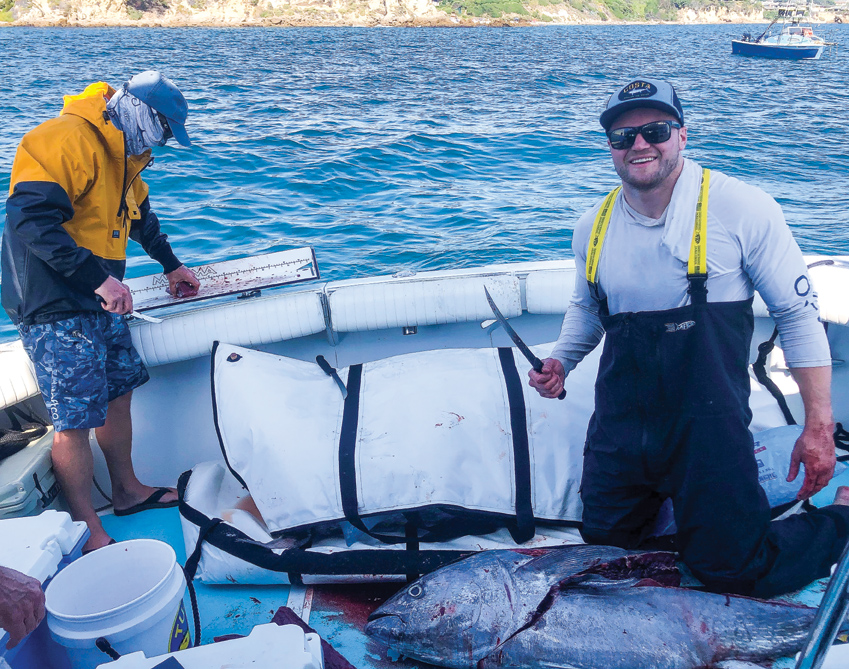 I have only heard of limited success stories out here on the west coast but deploying a Green Stick rig should be a deadly tool on our bigger bluefin fishery. The Green Stick set up cost prevents most of the private boat fleet from experimenting with them here locally, but it sure seems like the smaller ‘Kona’ Green Stick system would be deadly on our bluefin. My last trip to Kona I watched 25’ -30’ skiffs using the ‘Kona’ stick and absolutely smashing big yellowfin on them while the live bait and troll fleet had a slow day. Innovation – one of the keys to being successful on local bluefin.
I have only heard of limited success stories out here on the west coast but deploying a Green Stick rig should be a deadly tool on our bigger bluefin fishery. The Green Stick set up cost prevents most of the private boat fleet from experimenting with them here locally, but it sure seems like the smaller ‘Kona’ Green Stick system would be deadly on our bluefin. My last trip to Kona I watched 25’ -30’ skiffs using the ‘Kona’ stick and absolutely smashing big yellowfin on them while the live bait and troll fleet had a slow day. Innovation – one of the keys to being successful on local bluefin.